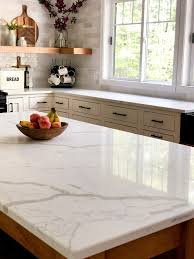Title: The Timeless Charm of Marble Countertops: A Complete Guide by an Interior Design Enthusiast

Introduction: Why Marble Countertops Are Always in Style
Marble countertops have been a staple in luxurious kitchens and bathrooms for centuries—and it’s easy to see why. With their elegant veining, smooth texture, and timeless appearance, marble surfaces bring an undeniable charm to any home. They not only elevate the aesthetics of a space but also serve as a symbol of sophistication and taste. Whether you’re building a new home or renovating your current space, marble countertops can be a game-changer.
What’s great about marble is that it fits almost any design style. From classic Victorian homes to sleek modern apartments, marble effortlessly blends in while also standing out. It’s versatile, visually stunning, and always in vogue. But before you rush to your nearest stone yard, it’s important to understand the ins and outs of marble countertops—because they’re beautiful, yes, but they also come with some considerations.
In this guide, we’ll walk you through everything you need to know about marble countertops: the benefits, the drawbacks, the care tips, and how to choose the right type for your space. Let’s dive in!
What Makes Marble Countertops Special?
Natural Beauty That Can’t Be Replicated
Marble is a natural stone, formed over thousands of years under intense pressure and heat. This geological process gives marble its distinct veining and coloring—no two slabs are ever exactly alike. That uniqueness is part of what makes marble countertops so desirable. When you install a marble surface, you’re bringing a piece of nature’s art into your home.
Unlike engineered stone, which is uniform and predictable, marble’s organic look creates a high-end feel that’s hard to duplicate. The veins can be subtle or dramatic, depending on the type, and they come in colors ranging from white and gray to green, pink, and even black. If you want a kitchen or bathroom that feels truly one-of-a-kind, marble is a top contender.
Cool Surface Perfect for Bakers
If you’re someone who enjoys baking, marble is your best friend. The stone naturally stays cool, making it ideal for working with dough, chocolate, and pastries. Professional bakers and chefs have relied on marble for decades for this very reason. The cool surface helps prevent sticking and keeps ingredients from overheating, which is especially handy in warmer climates or kitchens that get a lot of use.
Even if you’re not a full-time baker, having a dedicated marble counter for rolling out cookies or kneading bread adds a bit of culinary luxury to your home.
Adds Resale Value and Prestige
Installing marble countertops isn’t just about looks—it’s an investment. Homes with marble surfaces often attract more interest from buyers and can potentially fetch a higher price. Marble has a reputation for being high-end, and that appeal translates into perceived value. Buyers know it’s not cheap, and it communicates a level of care and quality in the home’s design.
If you’re thinking long-term, marble can pay off both in aesthetics and in market value. Just be sure to take care of it properly (more on that below), so it maintains its luxurious finish.
Types of Marble for Countertops
Carrara: The Classic Choice
Carrara marble is probably the most well-known type, and it hails from Italy. It’s characterized by its soft white background and subtle gray veining. Carrara is often more affordable than other marble types, making it a popular choice for homeowners who want that classic marble look without breaking the bank.
Despite its popularity, Carrara isn’t just a budget option—it’s genuinely beautiful. Its soft veining gives it a clean and timeless appearance that fits both modern and traditional spaces. It’s a safe bet for anyone new to marble.
Calacatta: Bold and Luxurious
If Carrara is the understated beauty, Calacatta is the bold and glamorous sibling. Calacatta marble also comes from Italy, but it features a whiter background and more dramatic, thick veining that can include gold or brown tones. It’s considered one of the most luxurious types of marble and comes with a higher price tag.
Calacatta is perfect for statement kitchens or bathrooms where you want the countertop to be the star of the show. It’s dramatic, eye-catching, and looks especially stunning when used for large islands or full-slab backsplashes.
Statuario, Danby, and Beyond
Statuario marble sits somewhere between Carrara and Calacatta in terms of veining and color. It has a whiter base like Calacatta but slightly more delicate veining. Danby marble, quarried in Vermont, is a great alternative to Italian varieties and has excellent performance qualities.
There are also colorful marbles like green Verde Alpi or pink Rosa Portugués, which can be used for bold, artistic designs. Each type has its own personality, and choosing the right one depends on your taste, budget, and the overall vibe of your space.
Pros and Cons of Marble Countertops
The Good: Beauty, Uniqueness, and Coolness
The biggest pro of marble is its undeniable beauty. It gives any kitchen or bathroom a polished, high-end look. Its natural variation means you won’t see the exact same countertop in someone else’s home, and that uniqueness is priceless to many homeowners.
Another huge plus is its temperature. As mentioned earlier, marble stays naturally cool, which is perfect for bakers and chefs alike. It’s also heat-resistant to a point, so you don’t have to panic every time a warm pot touches the surface—though trivets are still recommended.
The Not-So-Good: Maintenance and Staining
Let’s be real—marble isn’t for everyone. It’s porous, which means it can absorb liquids and stain if not properly sealed. Red wine, coffee, lemon juice—these are marble’s worst enemies. Even water rings can become a nuisance if you’re not careful.
It’s also a softer stone, so it can scratch more easily than granite or quartz. If you’re someone who doesn’t like to fuss or worry about every spill or scratch, you may want to think twice or opt for a honed finish that hides imperfections better.
The Verdict: Worth It If You’re Mindful
If you’re the type who doesn’t mind a little patina—or if you’re willing to do some basic maintenance like sealing the surface once or twice a year—marble can be well worth it. It’s not about being perfect; it’s about appreciating the character and story that develops over time.
Tips for Caring for Marble Countertops
Seal Regularly
Sealing your marble countertops helps prevent staining and etching. Most experts recommend sealing at least once a year, but this can vary depending on usage. There are even sealers available that last multiple years, offering extra protection.
Clean Spills Immediately
The best way to avoid stains is to clean up spills as soon as they happen. Keep a soft cloth handy and avoid using acidic or abrasive cleaners. Warm water and a gentle dish soap usually do the trick.
Use Trivets and Cutting Boards
Even though marble is heat-resistant, sudden changes in temperature can cause cracks. Using trivets or hot pads for pots and pans is always a safe move. And never cut directly on the marble—use a cutting board to avoid scratches and preserve the finish.
Choosing the Right Marble Countertop for Your Space
Match the Stone to Your Lifestyle
Think about how you use your kitchen or bathroom. Are you a messy cook or a clean freak? Do you want a countertop that looks pristine forever, or are you okay with a bit of wear and tear? Your lifestyle should guide your material choice.
If you’re someone who loves to entertain and doesn’t mind a bit of patina, go for it! But if constant upkeep stresses you out, you might want to look into alternatives like quartz that mimic marble but are easier to maintain.
Think About Finish: Polished vs. Honed
Polished marble has a glossy finish that highlights the color and veining, but it can show scratches and etches more easily. Honed marble has a matte finish that hides imperfections better and gives a more casual, lived-in look.
Both have their pros and cons—it really depends on your personal style and how much wear-and-tear your countertops will see.
Final Thoughts: Are Marble Countertops Right for You?
Marble countertops are not just a trend—they’re a timeless design element that can bring beauty, elegance, and character to your home. Yes, they require care, and yes, they can be a bit high-maintenance. But for many homeowners, the benefits far outweigh the drawbacks.
If you’re drawn to the natural beauty and sophistication of marble and you’re willing to give it the care it deserves, then it’s a fantastic choice. No other material offers the same level of visual impact and classic appeal.
At the end of the day, it’s all about creating a space that feels like home—and if marble helps you achieve that, go for it with confidence.



